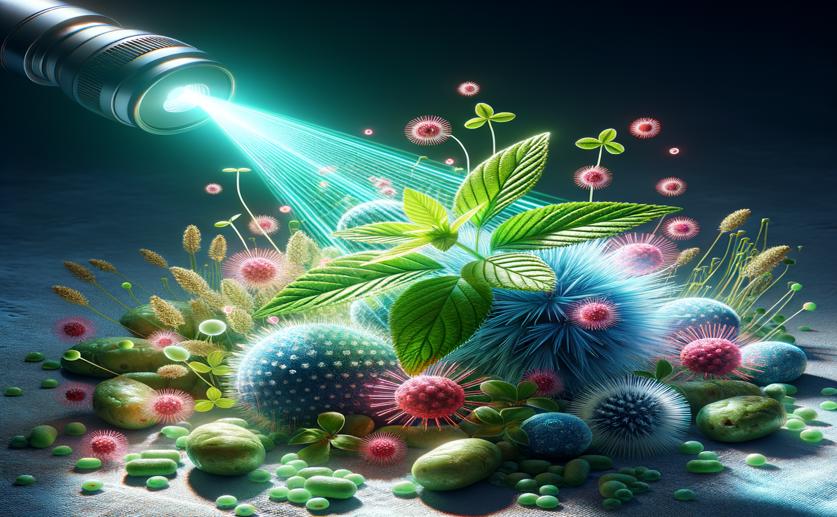
Using Healing Plants and Lasers for Effective Germ-Killing Therapy
Greg Howard
29th March, 2024

Image Source: Natural Science News, 2024
Key Findings
- Study at Islamic Azad University found plant extracts can kill antibiotic-resistant bacteria when activated by laser light
- Hibiscus and cactus extracts were effective against harmful bacteria when combined with a specific laser wavelength
- This PDI method could be a safer, resistance-free alternative to traditional antibiotics
References
Main Study
1) Simultaneous effect of medicinal plants as natural photosensitizers and low-level laser on photodynamic inactivation.
Published 27th March, 2024
https://doi.org/10.1007/s10103-024-04037-8
Related Studies
2) Photodynamic therapy: a new antimicrobial approach to infectious disease?
Journal: Photochemical & photobiological sciences : Official journal of the European Photochemistry Association and the European Society for Photobiology, Issue: Vol 3, Issue 5, May 2004
3) Photodynamic inactivation of a multispecies biofilm using curcumin and LED light.
4) Different photodynamic effects of blue light with and without riboflavin on methicillin-resistant Staphylococcus aureus (MRSA) and human keratinocytes in vitro.



 5th February, 2024 | Jenn Hoskins
5th February, 2024 | Jenn Hoskins